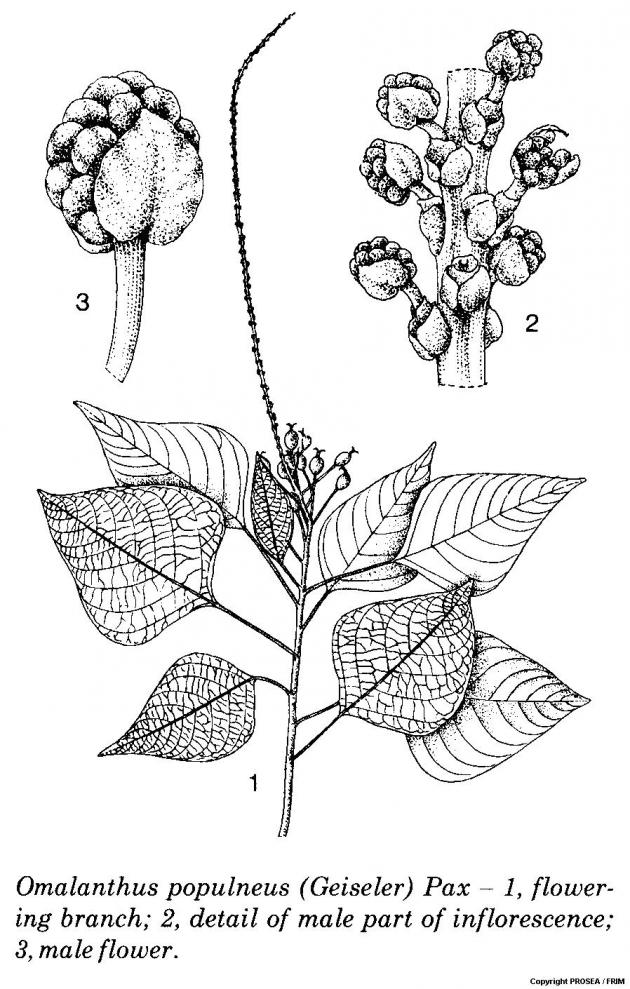Homalanthus populneus (Geiseler) Pax.
Family
Euphorbiaceae
Synonyms
Homalanthus populneus (Geiseler) Pax (orthographic variant); Omalanthus leschenaultianus A.H.L. Jussieu, Homalanthus populifolius (Reinw.) Hook.f., non Omalanthus populifolius Graham.
Vernacular Names
|
Malaysia |
Ludahi, kayu mata buta darat. |
|
English |
Mouse deer’s poplar. |
|
Indonesia |
Tutup (General), tutup abang (Javanese), totop (Madura). |
|
Thailand |
Mae mae. |
|
Philippines |
Malabinunga (Tagalog), balanti (Bisaya, Bikol). |
Geographical Distributions
Homalanthus populneus is distributed from southern Thailand, all over Malesia, except New Guinea, to the Bismarck Archipelago.
Description
Homalanthus populneus is a small tree that can reach up to 6(-10) m tall, smooth and with watery latex. The bark is greyish and roughened. The crown is rather flat and with spreading branches.
The leaves are triangular-ovate to rhombic-ovate, measuring 3-12 cm x 2.5-10 cm and entire. The leaves base is almost truncate with two small glands at the base of the blade while the apex is acuminate. The blades are pale bluish-green beneath and withering into yellow to reddish. The reddish petiole is 2-7 cm long.
The flowers are terminal with racemes 10-25 cm long. The male flowers are many, and with 6-10 stamens while there are 2-8 female flowers at the base of the raceme. They are long-stalked and with 2 long stigmas.
The fruit is a slightly spherical capsule, measuring about 1 cm in diametre, two-lobed, pale bluish-green and with 2 cavities where each contains a single black seed.
Ecology / Cultivation
Homalanthus populneus is locally common, especially in mountains of secondary forests and young regrowth; it is also found in lowlands in the undergrowth of primary forests and along rivers. It is recorded to grow in various types of soils.
Line Drawing / Photograph

References
1. Plant Resources of South-East Asia No. 3: Dye and tannin-producing plants.


